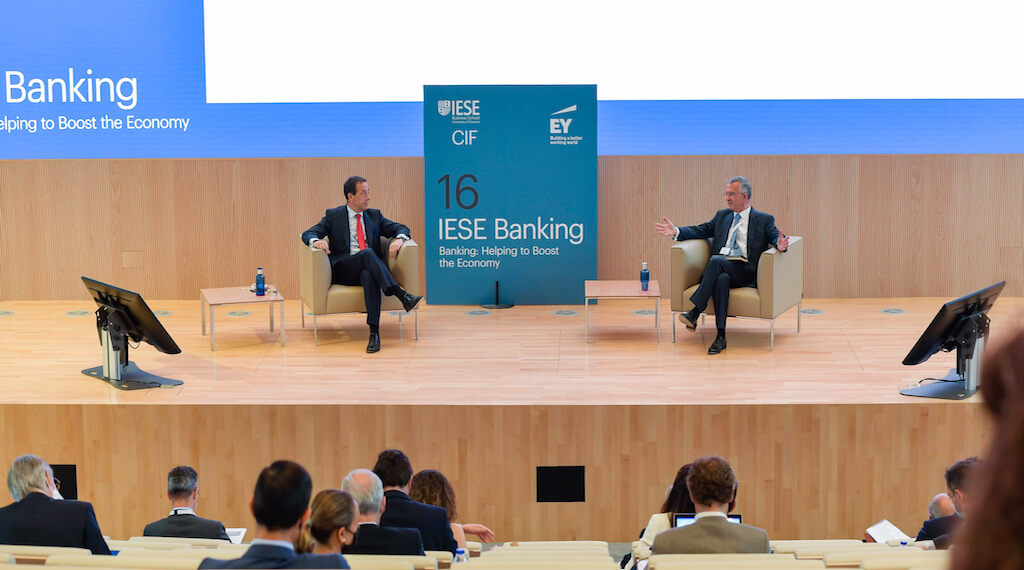Stories
Five Business Trends for 2017
Industry 4.0, gamification, antiglobalization, populism and recovery are the key themes of the year ahead
January 2, 2017
In addition to economic recovery, industrialization, ludification, antiglobalization and populism are the trends taking center stage in 2017, which political and business leaders must face. IESE Profs. Núria Mas, Mireia Las Heras, Marc Sachon, Pankaj Ghemawat and John Almandoz explain.
2017: Finally, a Post-Crisis Year
Interest rates to climb, the forecast is for moderate growth in the United States, with the ratio of unemployed persons per job opening falling to 1.2. Meanwhile, Western Europes economy is recovering more slowly with volatility anticipated, due to Brexit.
In Eastern Europe, Russia is driving a return to growth. In the Middle East and Africa, oil-producers, like Qatar and Nigeria, may benefit from rising energy prices. Yet the outlook is not so rosy for Latin America, dragged down by Brazils weakened prospects.
Asia is expected to be the region with the fastest growth, boosted by both India and China, although the latter is expected to see its growth march continue to slow down.
To face these economic and geopolitical trends head on, Professor Núria Mas recommends that business leaders:
- Expect the prices of commodities to go up.
- Plan for increased volatility.
- Capitalize on the growing middle-class consumption in emerging markets.
The Old Résumé-and-Cover-Letter Approach Is Dead
Digitization will continue to change the way we select and develop talent. For example, gamification is now engaging employees in the process of learning new skills and competencies in a way thats more fun, memorable and efficient.
Professor Mireia Las Heras suggests the following to better recruit and manage talent:
- Proactively search for candidates through online platforms and channels.
- Keep in mind that your employees are your best ambassadors to attract talent: leverage their contacts.
- Use gamification techniques to develop competencies in fun and engaging ways.
Ready for the Fully Connected Factory?
Although it will probably be 2020 before we see the fully connected factory, the potential of Industry 4.0 is already making itself felt. Smart machines and 3-D printing will facilitate nimble manufacturing in 2017, allowing companies to react quickly to changes in demand and in the environment.
According to Professor Marc Sachon, you should consider the following:
- Recruit and train more specialized workers, as fewer generalists will be needed.
- Exploit the levels of personalization that Industry 4.0 affords.
- Look to gain competitive advantage today, as these processes will become standard tomorrow.
The Collapse of Globalization Is a Myth
Although it may seem we are witnessing deglobalization, the flows of foreign direct investment have only grown in recent years. In fact, the DHL Global Connectedness Index 2016 indicates that global connectivity grew about 8% between 2005 and 2015.
For globalization strategies, Professor Pankaj Ghemawat points out:
- Dealing with national borders and the effects of distances is more critical than ever.
- Yo-yo strategies that oscillate between extreme views of a totally globalized world and then a deglobalized one should be avoided. Find the middle ground.
- His Triple A strategy calls for adaptation (respecting local differences), aggregation (overcoming distances), and arbitrage (exploiting differences).
Winning, Yes. But at What Cost?
Populism and doing whatever it takes to win are two ways to compete in politics and business, but great leaders will think more about their lasting contributions to society.
Professor John Almandoz invites you to:
- Make winning mean more than just maximizing profits for shareholders.
- Focus on improving the wider ecosystem that underpins shared success.
- Make sure your business has a higher purpose: it will boost your reputation and attract millennials.
Watch the video / download the infographic


